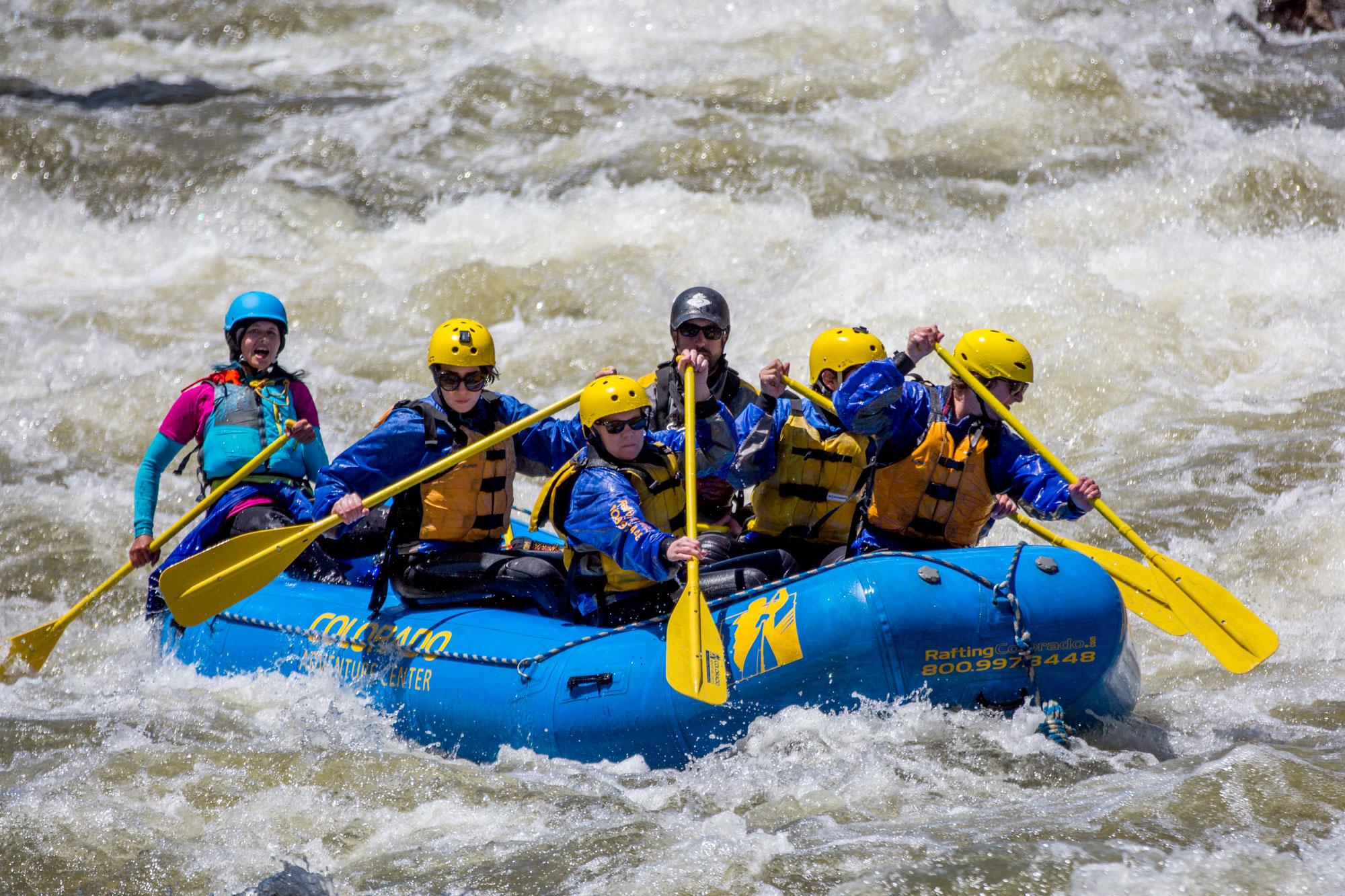
Update, July 23: Law enforcement in Breckenridge say they have recovered the body of a man from the Blue River. There have now been at least 14 deaths on Colorado waterways this year.
Rafting and floating Colorado’s rivers and streams has become less regulated, and a little more deadly.
But legislators, law enforcement officers and guided trip operators argue that the burden for safety has to fall largely on participants to be wary, pay attention to safety regulations and be willing to back out when high water like Colorado has seen this year makes the trip uncomfortably dangerous for them.
The American Whitewater organization has counted 12 fatalities and an injury on Colorado waterways this year while The Colorado Sun has counted 13 fatalities. Either way, it's far above the annual toll of 8 deaths on Colorado waterways each year since 2009 and the most since 12 lost their lives in 2016.
Four of this year’s deaths occurred during commercial rafting trips, a figure that’s below the 35 percent average of river and creek deaths that occurred on commercial trips during the period 2010 to 2017. Investigations are continuing, but rafting companies have not been found liable in any of the deaths.
But while commercial trips may not make up the majority of rafting deaths, with more than 105,000 miles of streams in the state, and millions of residents and visitors itching to float, tube or raft them, the only parts of the system that can be easily regulated are the companies that sell expert guidance to get paying customers to and through thrilling rapids.
And oversight of those companies has been dropping from already low levels.
According to a 2018 review of river outfitter licensing efforts by the state Department of Regulatory Agencies, or DORA, during the period from 2012 to 2016, the state spent, at most, $110,028 in a year to inspect the nearly 200 commercial rafting companies operating here. That number dropped by about $27,000 during the fiscal year 2016 to 2017 because there was a period of time when one of the positions was vacant. Three of the positions are seasonal rangers who work with a boating safety coordinator.
There has been a drop in “contacts” with commercial rafting companies by rangers from Colorado Parks and Wildlife. Those contacts include inspections before, during or after trips and that number fell from 6,297 in 2013 to 4,826 in 2017, the most recent year with published statistics. Office inspections of required paperwork fell even more dramatically, from 43 in 2013, to just 9 in 2017. CPW rangers have also been issuing fewer warnings and fines, according to the report; from 119 warnings and 68 fines in 2013 to 35 and 8 in 2017, with the number of fines dropping steadily each year but one since 2013. The greatest emphasis in enforcement is on checking for required piloting and safety equipment.
But Clear Creek County Undersheriff Bruce Snelling, who dealt with a rafting fatality on Clear Creek in early July, said much of the safety burden has to fall on the participants, who are warned of the dangers and acknowledge the possible consequences by signing a waiver of rights, not the companies.
“They sign the waivers without a complete understanding of how dangerous it can actually be,” he said of rafting company customers. “The questions are asked. ‘Do you have a heart condition?’ ‘Are you capable of swimming?’”
He said 99 percent of the time, commercial outfitters conduct great safety briefings before a trip, but it can be hard for them to screen all clients appropriately. Snelling said the problem is usually with tourists on commercial rafting trips, who have likely paid for a trip, traveled many miles to Colorado and “they don’t want to turn back,” even if they are unsure of their fitness to tackle whitewater after hearing the safety briefing.
“It’s absolutely heartbreaking to have somebody lose their life while they’re engaged in a recreational event,” Snelling said. “You can imagine what it can be like for somebody to be out of state, to be rafting with their father and then have that end so tragically.”
Jason Himick of Boulder was a guide for four years and spent some time on the Roaring Fork and Arkansas rivers. He said he ran into inspectors twice -- both as a guide and a private boater. As a private boater, he said inspectors looked for a personal flotation device and that the equipment had a name on it.
“As a guide, they were just making sure you had the minimum amount of safety equipment,” he said, noting they made sure every guest had a personal flotation device, spare paddles and a medical kit.
River rafting companies must register with the state, pay a $400 fee, and agree to inspections to insure they carry the necessary equipment and that their guides meet state standards for experience.
In May, Colorado state Sen. Don Coram and Rep. Julie McCluskie sponsored a bi-partisan bill that continued state regulation of the program until 2028.
“White water rafting is an important outdoor event, recreation, opportunity for many tourists as well as local,” McCluskie said. “It was important to me that we continue to have a licensing program in place that would make sure our commercial river outfitters were properly licensed and that they were providing the safest experience that they could for any of our visitors.”
McCluskie, a Democrat from Summit County, represents Delta, Gunnison, Lake, Pitkin and Summit counties. She said the decline in state spending is due in part to a period when the agency wasn’t able to fill a position and because the rafting season affects how long inspectors are on duty.
McCluskie said she hopes visitors choose to go on a trip with a licensed commercial outfitter rather than boating privately.
She noted of this year’s deaths, “less than half of them occurred with commercial outfitters.”
Dave Costlow with the Colorado River Outfitters Association said rafting customers should be upfront about their experience level, use caution and even delay their trip when there are high waters.
“They should always be picking a trip that’s appropriate with their skill level,” he said.
Other commercial outfitters have said if water levels are high, they’ll move trips around on the river to accommodate a group’s experience level.
Himick said in his experience as a guide, he usually wouldn’t know anything about the guests until the day of the trip. The information he received was limited and didn’t tell him about the guests’ previous experience.
But he does think outfitters are doing their best.
“I really think it’s just about education and that would really help improve safety on rivers rather than any regulatory component,” Himick said.
This story has been updated to reflect imprecision on the 2019 death toll.









